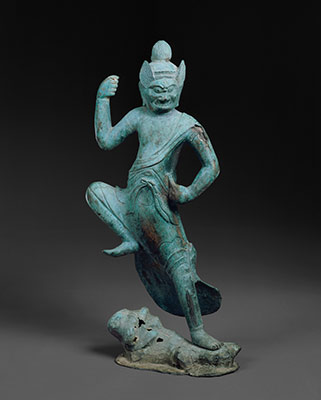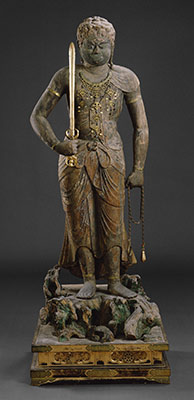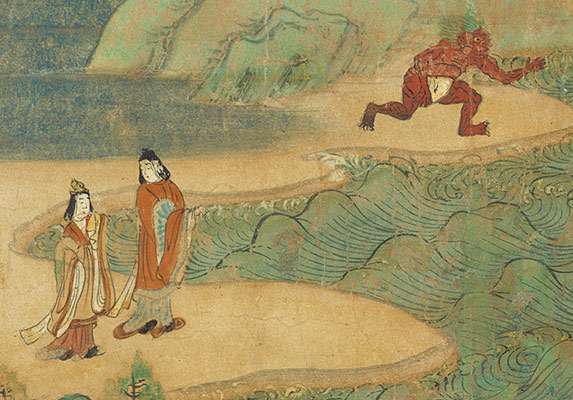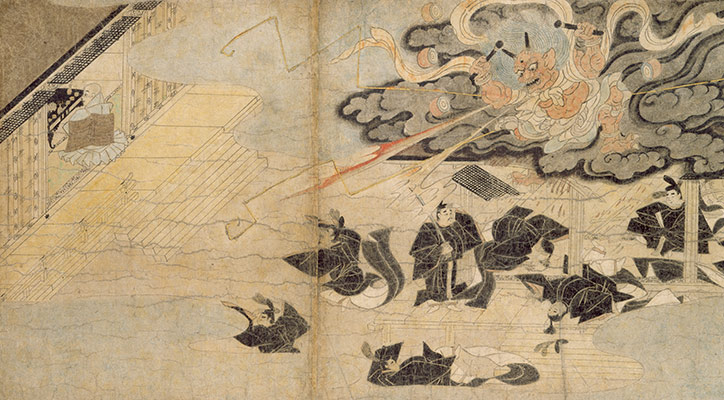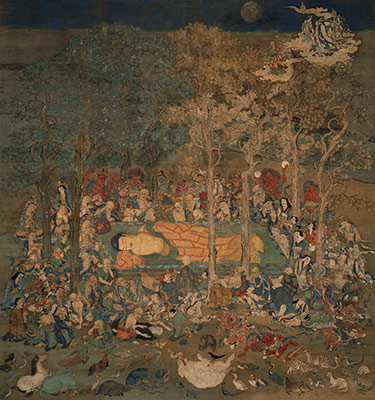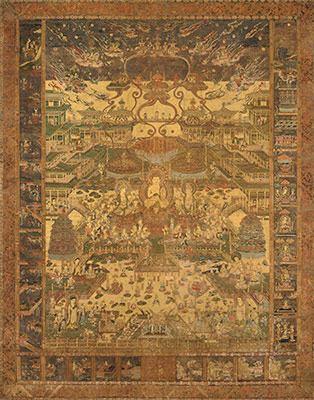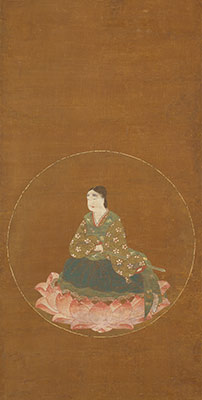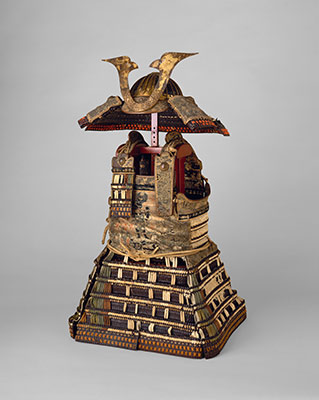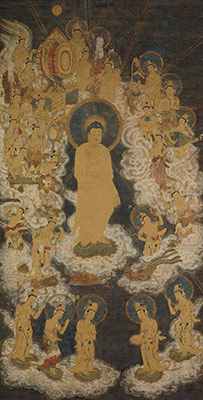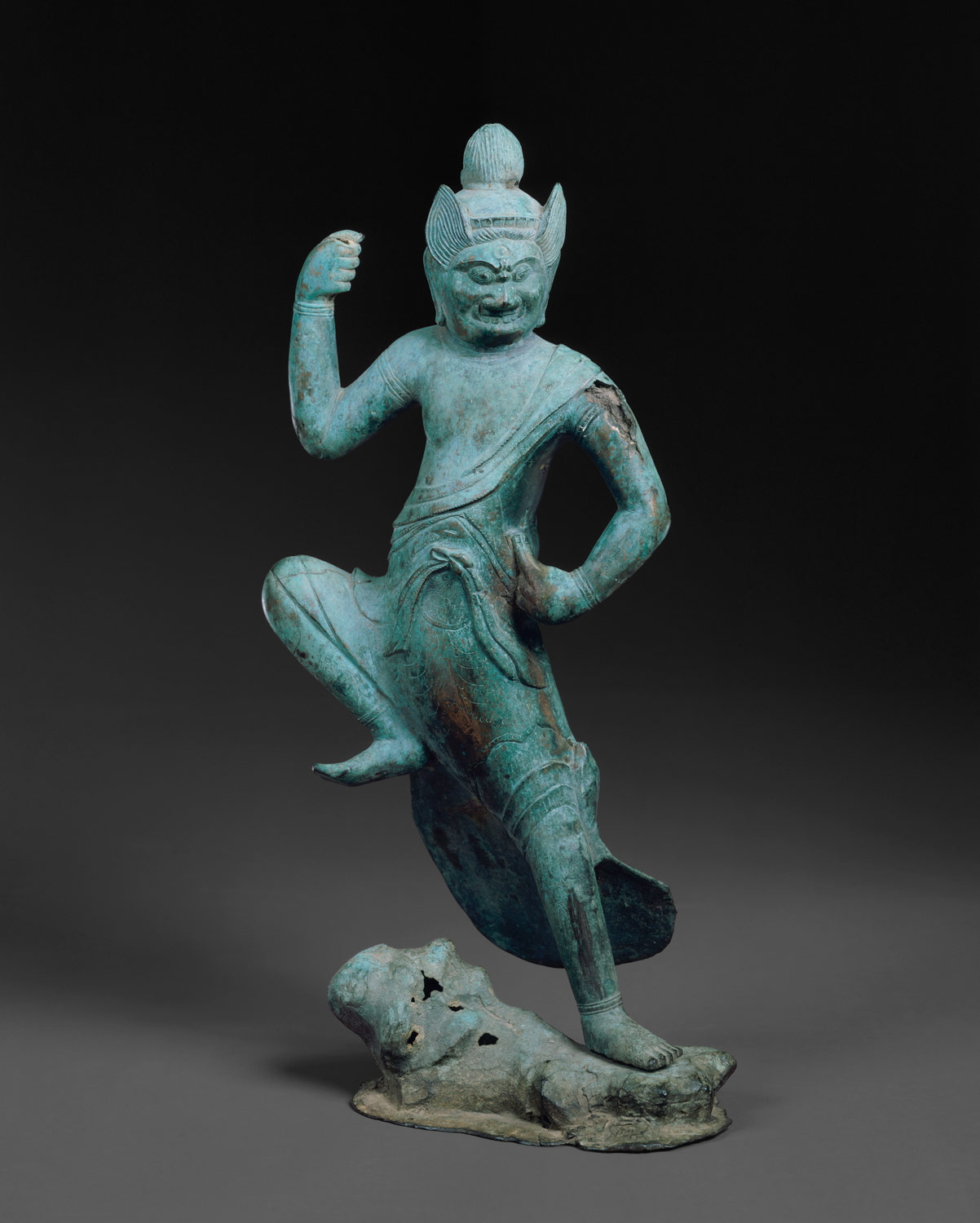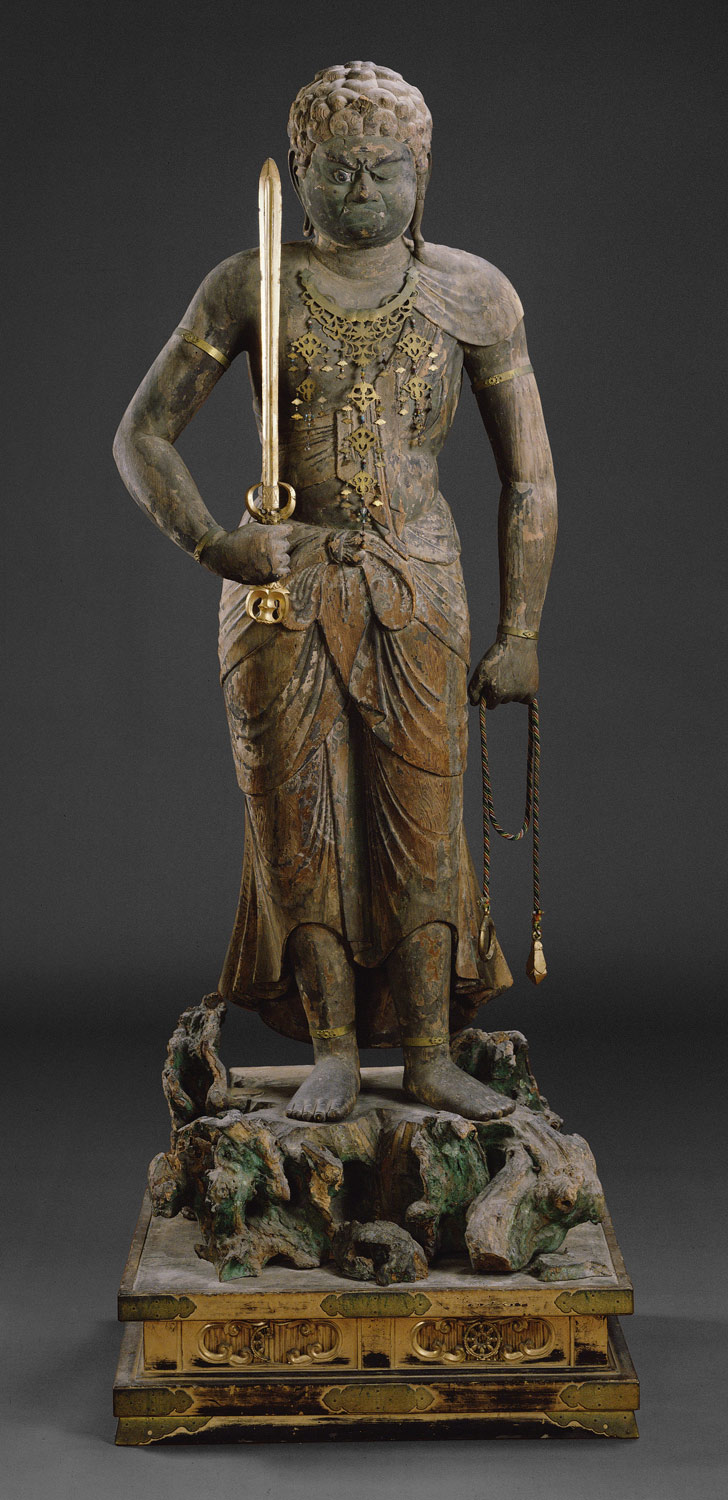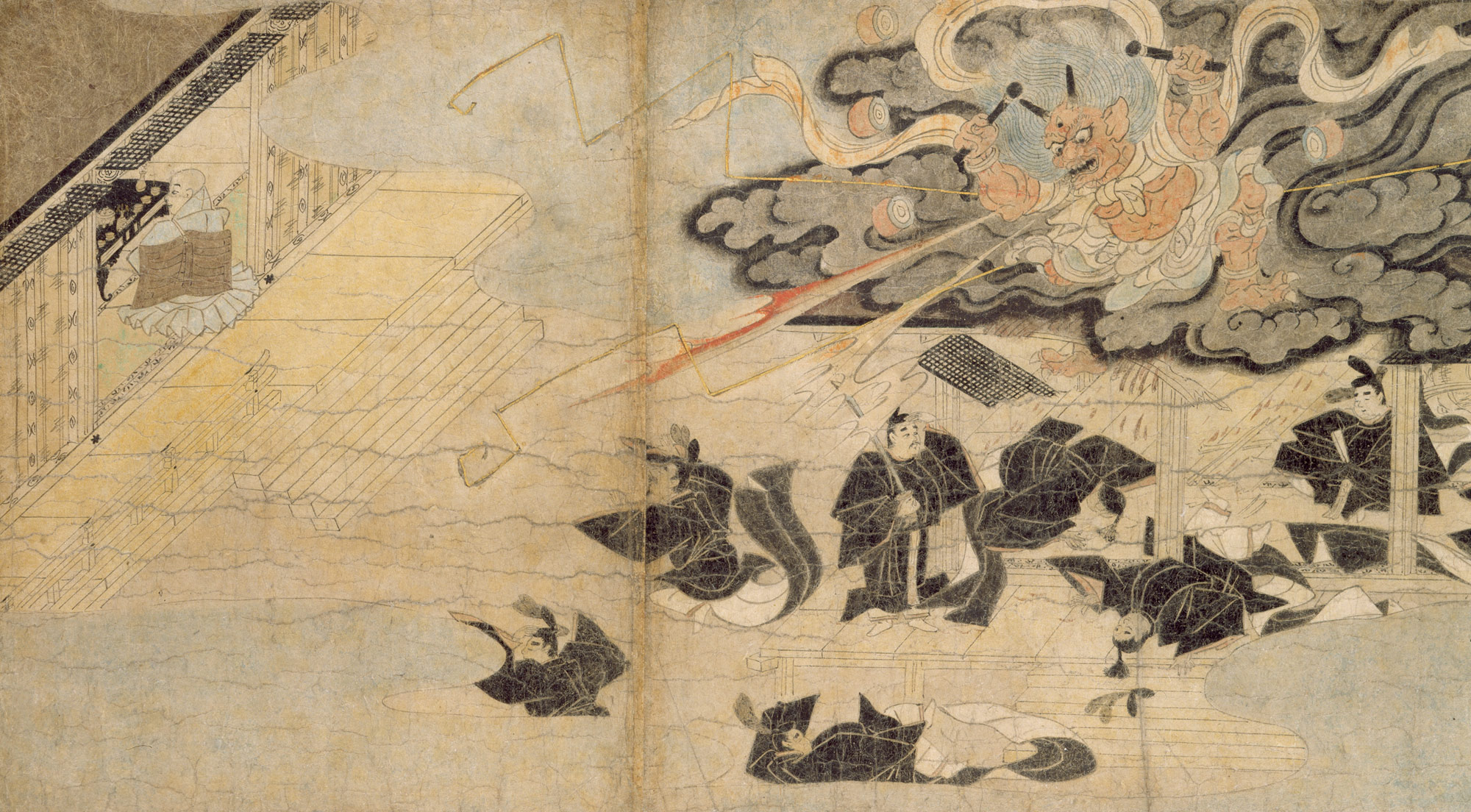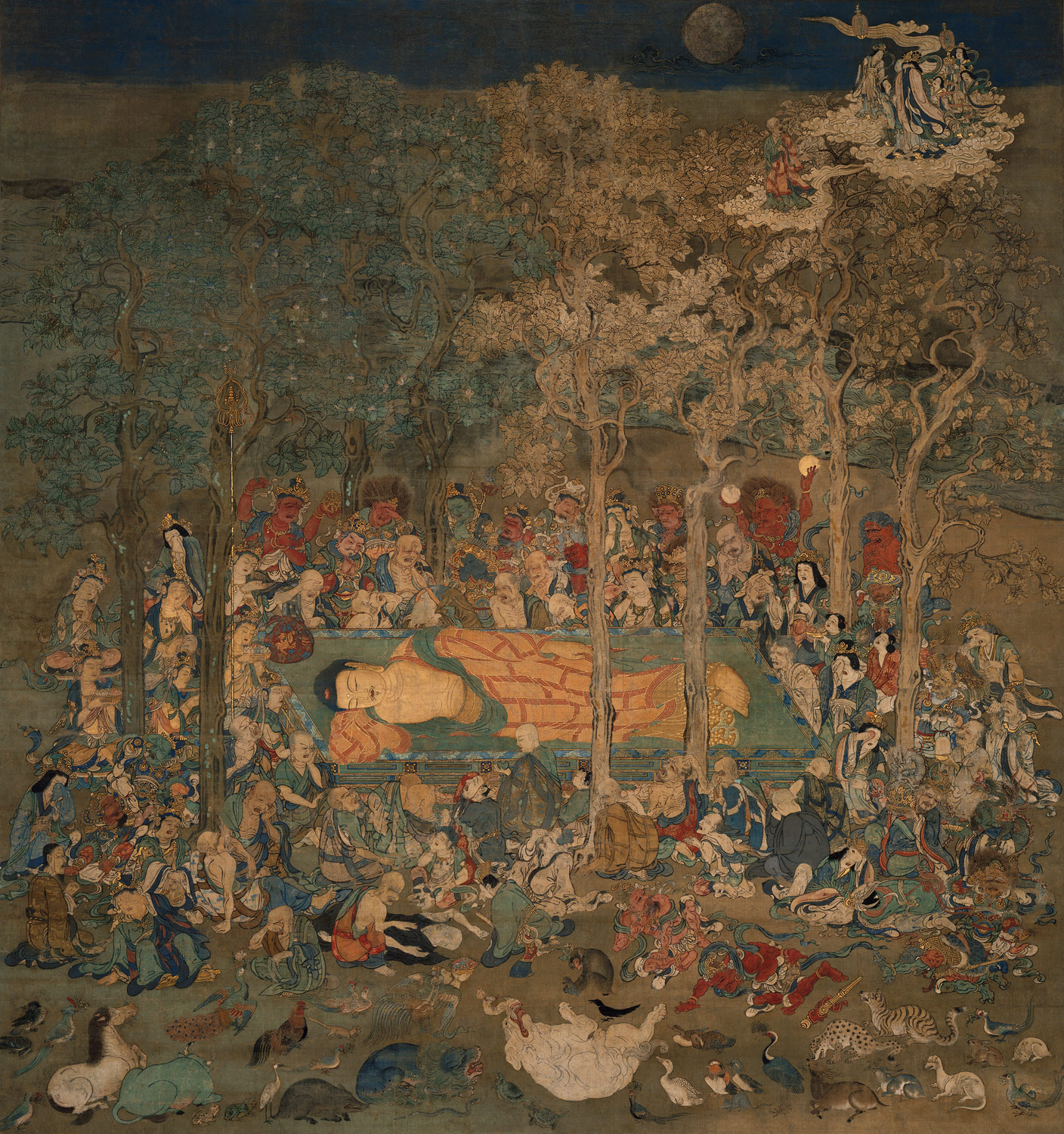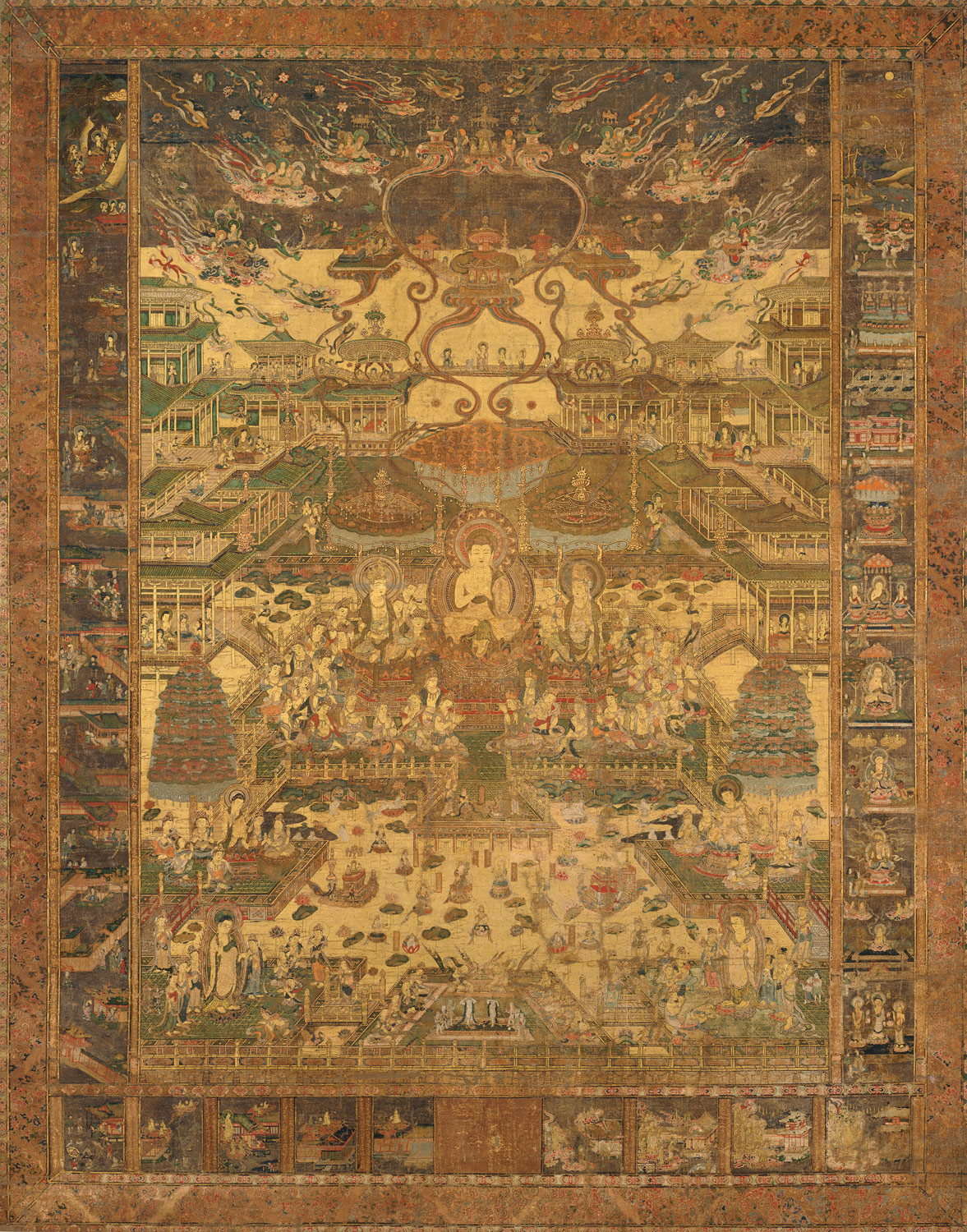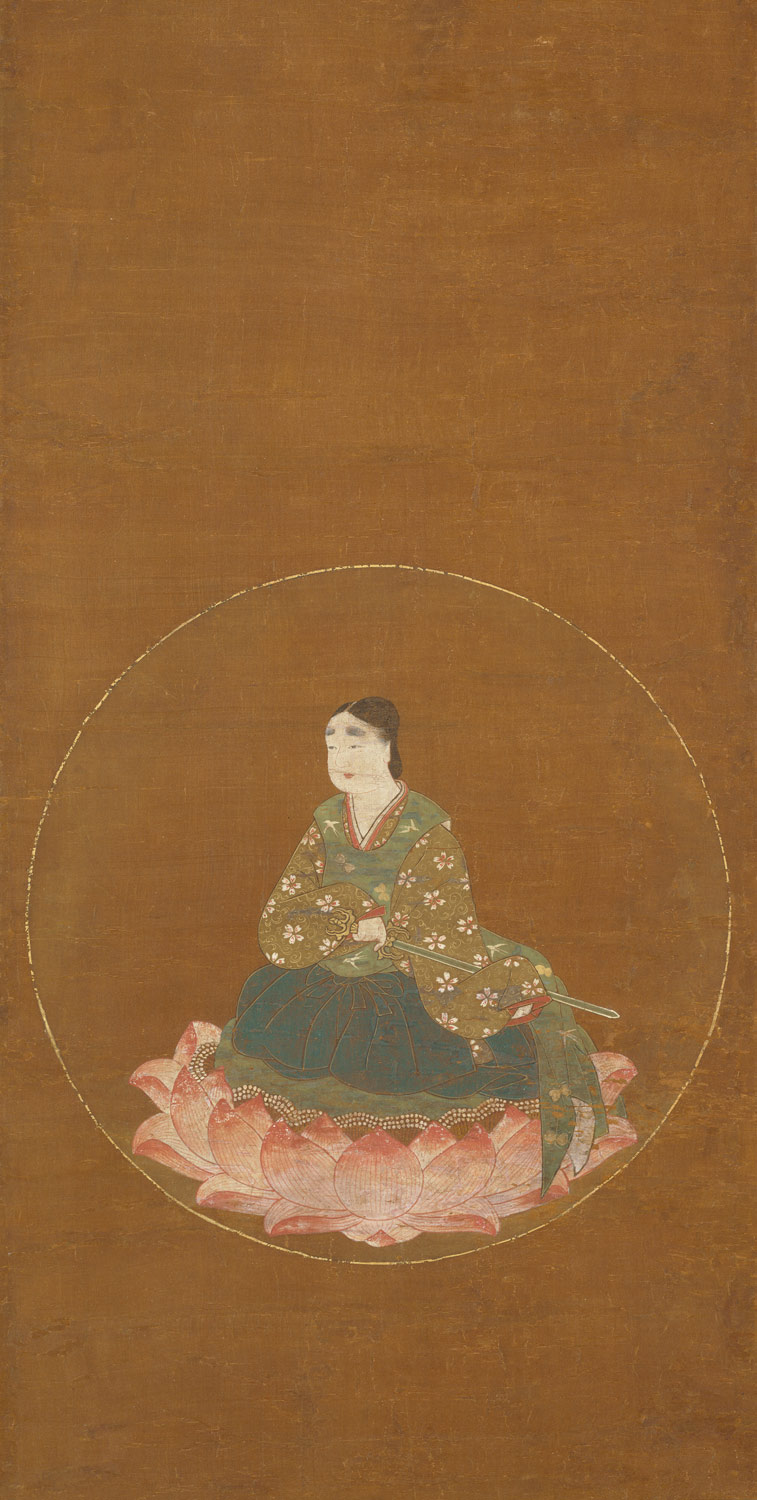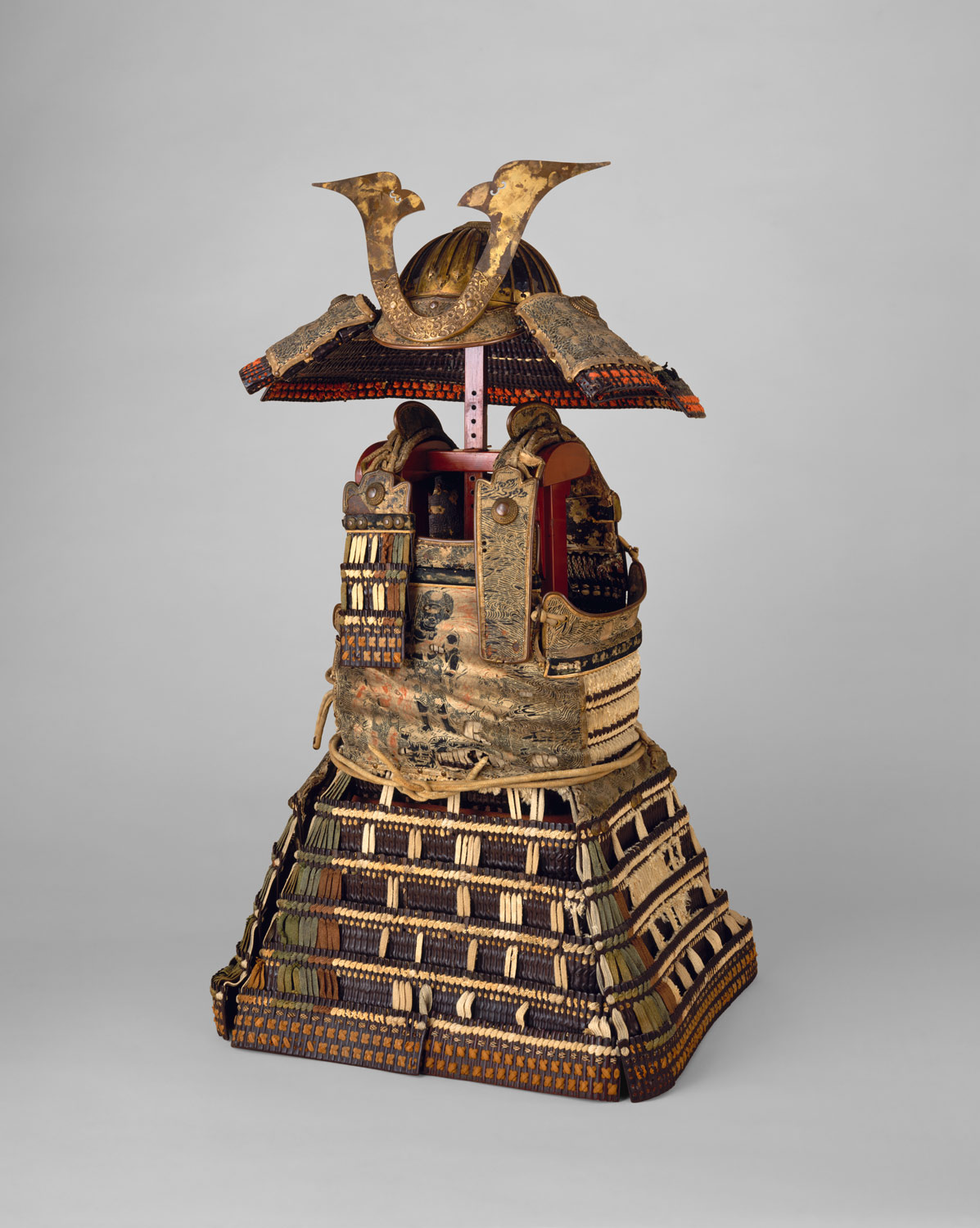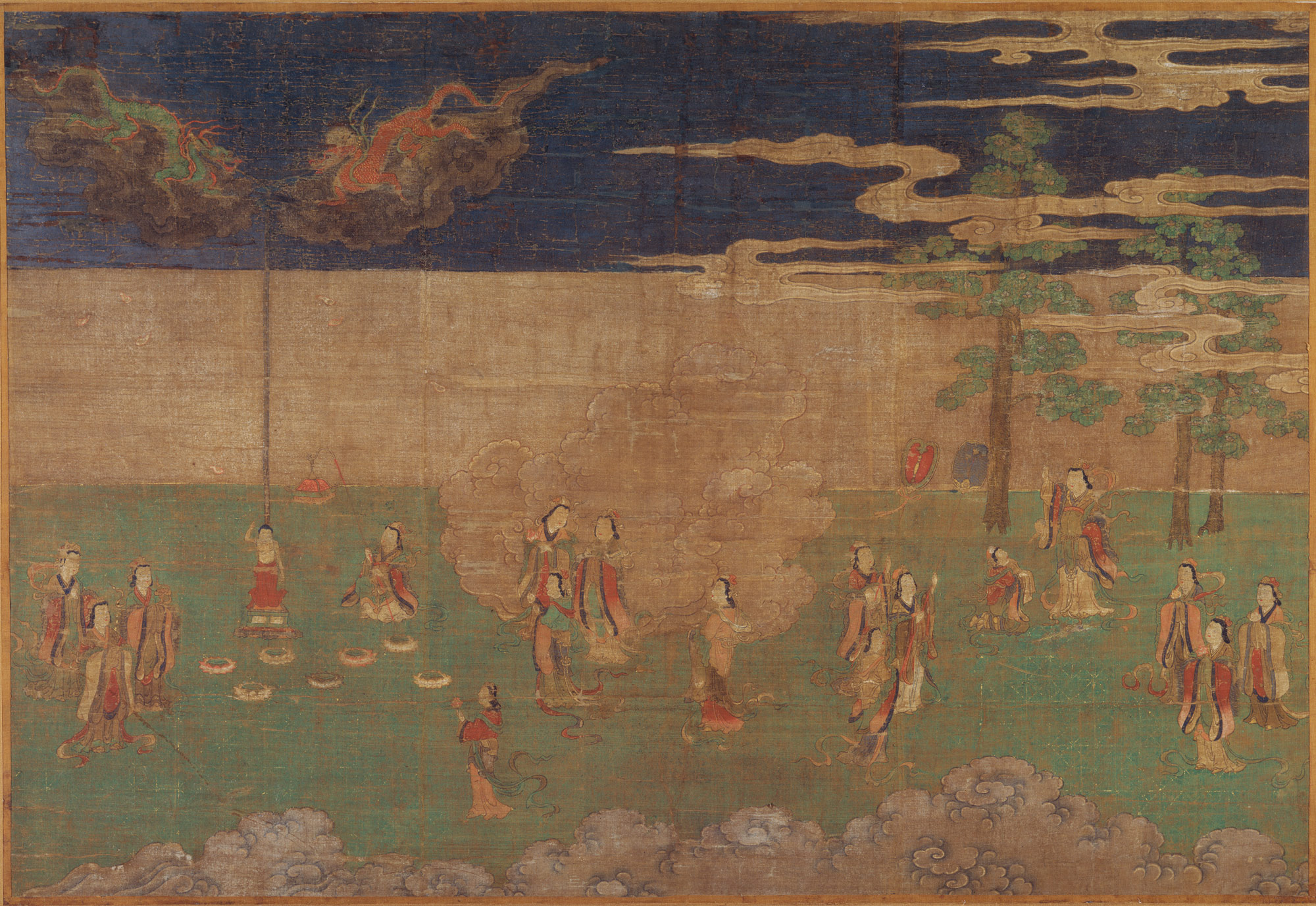While enjoying a lifestyle of material wealth and cultural elegance in the capital Heiankyō, the imperial court’s political authority enters a period of decline. Provincial governors gradually amass greater military and economic strength. In the second half of the twelfth century, several devastating wars hasten the transfer of hegemony from the aristocracy to two rival military clans, the Taira and the Minamoto. When Minamoto Yoritomo (1147–1199) succeeds in defeating his Taira rivals in 1185, he establishes a military regime at Kamakura, his clan’s provincial power base.
Ironically, the Minamoto shoguns suffer a fate similar to that of the Heian emperors—within a few generations they are weakened by the growing power of ally clans, in particular their relatives through marriage, the Hōjō. Eventually the Minamoto are supplanted by another military dynasty, the Ashikaga, who establish their base in Kyoto in 1336.
Beginning in the thirteenth century, the meditative Zen school of Buddhism takes root in Japan, brought to the country in part by Chinese monks fleeing the Mongol invasion. Enthusiastically received in Japan, Zen becomes the most prominent form of Buddhism in the country between the fourteenth and sixteenth centuries.
